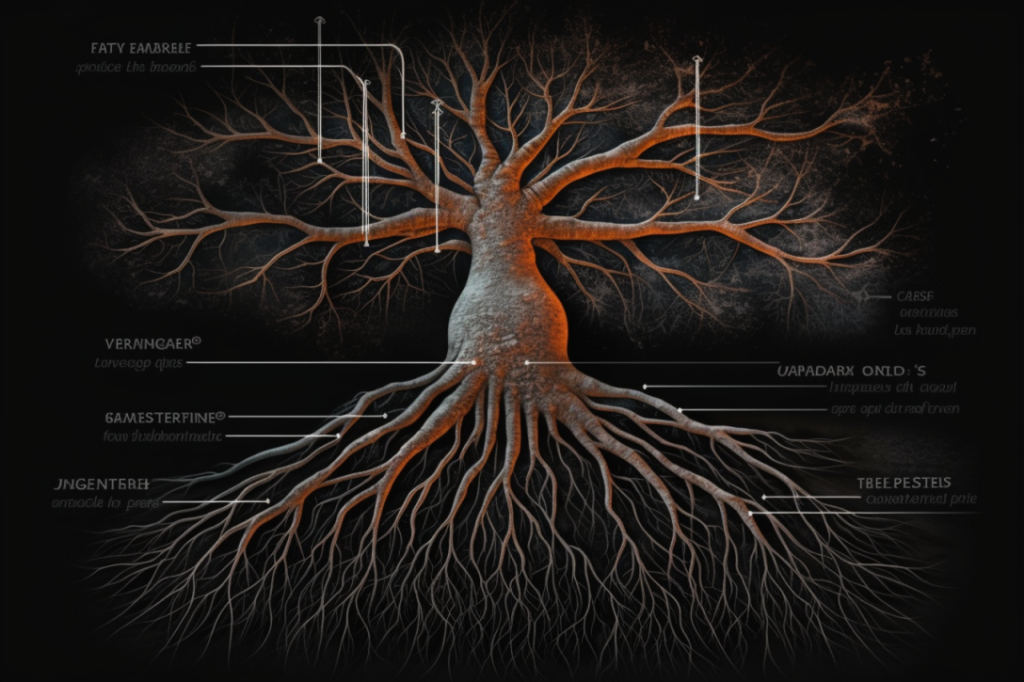Picture this scenario: you’re crawling a site. Then the crawl is done. You begin looking at links before looking at the site as a whole.
You find: a thousand links with the same anchor text. Or, you find links that have redirects to 4xx errors. Or, you have the worst internal link architecture you have ever seen.
That’s why making sure that you iron out common internal link building mistakes is critical.
What Is an Internal Link and Why Does it Matter
An internal link is a hyperlink that points to another page on the same website (for example, a “Blog” link on your homepage that takes you to the main blog page of your site). Internal links are important for two main reasons: they help visitors navigate your website, and they help improve your website’s search engine ranking.
When used properly, internal links can help guide visitors to the most relevant content on your site. They can also be used to promote new content or highlight special offers.
In addition, search engines use internal links to index websites and determine their relevance to various search queries.
By including well-placed internal links, you can help improve your website’s visibility and attract more visitors.
Why You Should Care About Your Site’s Internal Linking Structure
When it comes to SEO, many people focus solely on external factors, such as building links and creating high-quality content. However, it’s important to remember that your site’s internal linking structure is also a crucial element of SEO.
Internal linking helps search engines index your pages and understand the relationships between them. It also ensures that users can navigate your site easily and find the information they’re looking for.
As a result, taking the time to care about your site’s internal linking structure can pay off in higher search engine rankings and increased traffic.
The Most Common Mistakes People Make When Building Links Internally
Link building is an essential part of SEO, but it’s also one of the most difficult and time-consuming tasks. One way to simplify the process is to build links internally, from one page on your website to another.
However, this can also be one of the easiest ways to make mistakes that can harm your SEO. The most common error is not linking to enough pages. Each page on your website should have at least one link to another page.
Otherwise, the search engine spiders will have difficulty crawling your site and indexing your content. Another common mistake is linking to the wrong pages. Make sure to link to pages that are relevant to the topic at hand and that are likely to be of interest to your readers.
Broken Internal Links
One of the most frustrating things for a website visitor can be finding a broken link. Whether they’re trying to purchase a product or simply read more about your company, a broken link can result in lost business.
In addition, too many broken links all at one time can also decrease your search engine ranking and make it difficult for new visitors to find your site.
When a website has broken internal links, it can cause a number of problems. This problem can make it difficult for users to navigate the site. Next, it can prevent search engines from indexing all of the site’s content.
Also, it can lead to a loss of PageRank and visibility in search results. All of these problems can be avoided by regularly checking for broken internal links and fixing them as soon as they are found.
Fortunately, there are a number of tools that can help you automate this process and keep your site running smoothly.
With a little effort, you can keep your website free of broken links and ensure that your visitors have a positive experience.
Broken External Links
As we just mentioned, one of the most frustrating things for internet users is coming across a broken link.
Whether you’re trying to access a website, download a file, or just click on a hyperlink, a broken link can mean wasted time and poor user experience.
So what causes broken links?
There are actually a few different reasons why links can break. One common reason is that the website or web page that the link points to has been moved or deleted.
This often happens when websites are redesigned or updated, and old pages are no longer available. Another reason for broken links is that the URL was typed incorrectly.
This can happen when someone manually writes down a URL instead of copying and pasting it, or when a URL is shortened using a service like Bitly and the full URL is not copied correctly.
Whatever the reason for a broken link, it’s important to fix it as soon as possible. Not only is it annoying for users, but broken links can also hurt your website’s search engine ranking.
If you have a lot of broken links on your site, it’s a good idea to do a thorough audit and fix any that you find.
Too Many Links On-Page
Adding links to your website can be a great way to provide additional information for your visitors. However, it is important to avoid adding too many links, as this can make your site appear cluttered and amateurish.
In general, it is best to limit the number of links on each page to no more than three or four. Additionally, try to avoid linking to pages that are unrelated to the topic at hand.
Including too many off-topic links will only serve to confuse your visitors and make them less likely to return in the future.
While it is important to include links in your web content, too many links can be just as harmful as too few. When a page contains too many links, it can appear spammy and difficult to navigate.
This can cause visitors to click away from the page, which will hurt your website’s bounce rate. Additionally, search engines may view a page with too many links as being less relevant, which could hurt your website’s ranking.
Therefore, it is important to strike a balance when it comes to the number of links on your website.
Include enough links to provide visitors with the information they need, but don’t go overboard and risk turning them away.
By keeping your links relevant and concise, you can ensure that your website provides a positive experience for all who visit.
Nofollow Attributes in Outbound Internal Links
For SEO professionals, the use of nofollow attributes in outbound internal links has been a contentious issue. Some argue that it is an essential tool for preventing link dilution, while others contend that it does more harm than good.
However, the reality is that there is no one-size-fits-all answer to this question.
Further muddying the waters are the recent, brand-new nofollow rules that transformed the use of nofollow forever: the use of sponsored for paid links, the use of ugc for user-generated content, and standard nofollow.
Further complicating things, in comes Google, who contends that links are not counted if you use nofollow. If you are including links on your site that are editorially vouched for, and that are high-quality enough, then you should never need to use nofollow.
They mention that nofollow should only be used when you have a link that is questionable, and does not meet editorial standards.
Keyword Stuffing in Internal Links
In the world of SEO, “keyword stuffing” refers to the practice of loading a webpage with so many keywords that it becomes difficult to read.
This was once a common tactic used to game the search algorithms, but nowadays it is looked down upon by both users and search engines alike. However, there is one area where keyword stuffing can still be helpful: internal links.
Internal links are links from one page on your site to another. They help users navigate your website and help search engines understand the structure of your site. By including keywords in your internal links, you can signal to the search engine what each page is about, making it easier for them to index your site correctly.
Just remember to keep your keywords relevant to the context of each page, or you risk turning off both users and search engines.
Orphaned Pages Within a Sitemap
When a website’s structure changes, pages can sometimes be orphaned – that is, they are no longer linked to from any other pages on the site.
As a result, these pages become difficult for both users and search engines to find. Orphaned pages can also occur when a website is first launched, if there are pages that just don’t have links to them. To avoid this problem, it’s important to make sure that all of your website’s pages are properly linked together.
You can also use sitemaps to help users and search engines find all of your site’s pages. By including a sitemap on your website, you can make it easy for everyone to find the information they’re looking for.
After a Site Migration, Finding and Repairing Broken Internal Links Should Be a Top Priority
After a site migration, it is essential to check for broken internal links and repair them as soon as possible. Broken links can cause a variety of problems, including less traffic along with decreased search engine performance.
Not to mention, they can be incredibly frustrating for users. To find broken links, you can use a variety of tools, including Google Search Console and Screaming Frog. Once you’ve found the broken links, there are a few different ways to fix them.
The most straightforward solution is to simply update the URL in your content management system. Alternatively, you can set up 301 redirects or use a plugin to automatically fix broken links.
Taking the time to repair broken internal links will help ensure that your site continues to run smoothly and avoid any negative consequences.
Broken Internal Links Can be a Pain, But Repairing Them Can Be Worth It In the Long Run
Broken internal links can be a pain, but they are worth it for disastrous sites. Internal links are essential for navigation and for passing link equity between pages. However, when a page is deleted or moved, the links to that page become broken.
This can cause confusion for visitors and make it difficult for search engines to index your site. Although it can be tempting to remove all of your broken links at once, we recommend analyzing your traffic and making sure that you redirect them instead.
If in doubt, redirect those broken links. It’s important to keep track of your broken links and fix them as soon as possible. While it may be time-consuming, maintaining a healthy link profile is essential for any site that wants to rank well in search engines.








